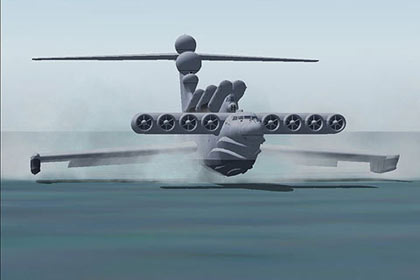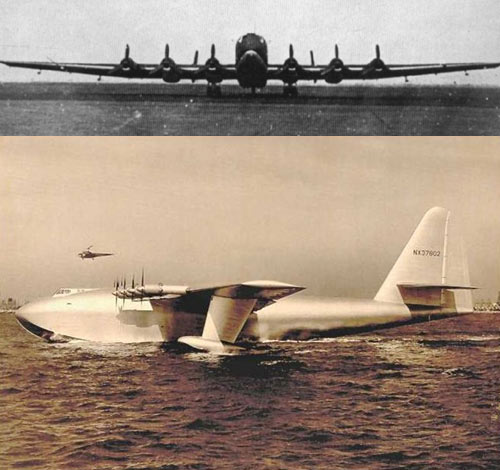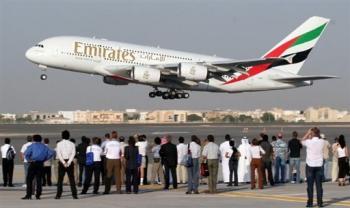
The one Lun-class ekranoplan originally developed by the Soviet Union military transports, and based mostly on the shores of the Caspian Sea and Black, at a naval base near Kaspiysk. During the Cold War, ekranoplans were sighted for years on the Caspian Sea as huge, fast-moving objects. The name Caspian Sea Monster was given by US intelligence operatives who had spotted the huge vehicle, which looked like an airplane with the outer halves of the wings removed. After the end of the Cold War, the "monster" was revealed to be one of several Soviet military designs meant to fly only a few meters above water, saving energy and staying below enemy radar.
The 8-engined sea skimmer could have been a deadly weapon of war with it’s 6 ‘Sunburn’ anti-ship missiles and ability to travel at high speed under the radar of patrol aircraft. The Lun-class (Russian: "Hen Harrier") (NATO reporting name: "Utka"; Russian: "Duck") ekranoplan Wing-In-Ground effect vehicle was an extremely unusual aircraft designed by Rostislav Evgenievich Alexeev and used by the Soviet & Russian navies from 1987 to sometime in the late '90s. Wing-in-ground-effect aircraft use the extra lift of their large wings when in proximity to the surface (about one to four meters). It is also interesting to note that this is the largest military aircraft ever built, with a length of 73m, rivaling that of the Hughes H-4 Hercules "Spruce Goose" and many modern jumbo jets.

Currently the world's largest aircraft, the first Antonov An-225 Mriya (meaning "Dream") proto- type flew on 21 Dec. 1988. It was designed and built by Antonov Design Bureau (headquarters in Kiev, Ukraine), known for their outstanding achievements in producing heavy transport aircraft. It is the largest aircraft to ever takeoff more than once. Capable of transporting oversized objects externally, the An-225 was designed mainly to transport the Russian space shuttle "Buran" and its components from a service area to a launch site, although the Antonov bureau is looking for possible commercial applications for the enormous aircraft.
Construction of the An-124 provided the basis for the new aircraft with Antonov using many of the same components to keep cost and development efforts down. Although the basic configuration is the same as the An-124, the An-225 is longer, has no rear ramp/door assembly, and incorporates a 32-wheel landing gear system (two nose and fourteen main wheel bogies, seven per side, each with two wheels). The Mriya is not a military aircraft, however, it packs a great potential for military use as a super-heavy transport, it is capable of airlifting cargos that no other aircraft in the world is capable of.

The Hughes H-4 Hercules (registration NX37602) is a "one-off" heavy transport aircraft designed and built by the Hughes Aircraft company. The aircraft made its first and only flight on 2 November 1947. Built from wood due to wartime raw material restrictions on the use of aluminum, the Hercules is the largest flying boat ever built, and has the largest wingspan and height of any aircraft in history. It survives in good condition at the Evergreen Aviation Museum in McMinnville, Oregon.

The 555 seat, double deck Airbus A380 is the most ambitious civil aircraft program yet. Airbus first began studies on a very large 500 seat airliner in the early 1990s. The European manufacturer saw developing a competitor and successor to the Boeing 747 as a strategic play to end Boeing's dominance of the very large airliner market and round out Airbus' product line-up.